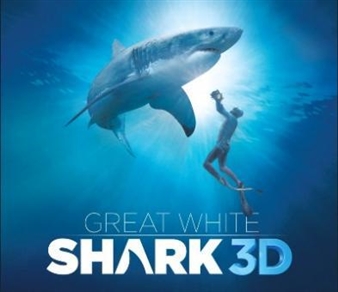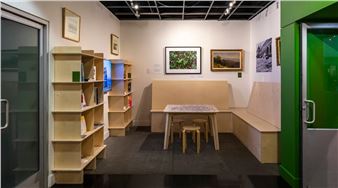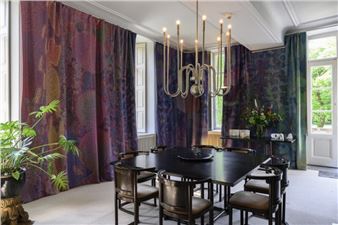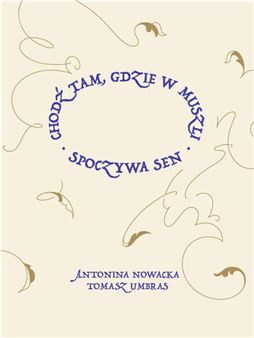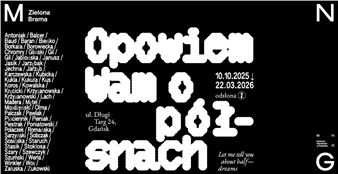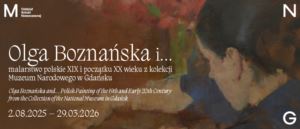Eight and a Half Weeks. GdaЕ„sk artist Bruno Paetsch (1891вҖ“1976)
The third exhibition in the вҖһEight and a Half WeeksвҖқ series is a close encounter with the work of Bruno Paetsch, a distinguished GdaЕ„sk artist who was forced to leave his hometown after World War II. He was inspired by literature and mythology, and was particularly fascinated by the figure of the misunderstood loner, individualist, and misfit. The exhibition, running from 19 September to 16 November at the Department of Historical Art, will feature a number of the artistвҖҷs works acquired in 2022, as well as works from the pre-World War II collection of the City Museum.
Bruno Paetsch (1891-1976) began his artistic education at the Kunstgewerbeschule in GdaЕ„sk and later continued it at the Kunstakademie in Berlin. BerlinвҖ“not only a relatively close academic centre, but also a metropolis where the most avant-garde trends in art intersectedвҖ“was, alongside KГ¶nigsberg, a natural destination for GdaЕ„sk artists. PaetschвҖҷs stay in this city resulted in his predilection for new trends in art and his departure from academicism.
In the 1930s, he received a scholarship that enabled him to travel to Rome for a year. When he returned, he lived and worked in GdaЕ„sk until the end of World War II, but after 1945, like many GdaЕ„sk inhabitants, he was forced to leave his hometown and settled in Hamburg, where he worked as an art teacher at a school in the Barmbek-Nord quarter.
Even though Paetsch was one of the most talented artists of the Free City of GdaЕ„sk, the only lasting trace of his creative presence in the city is the bas-relief titled вҖһMotherhoodвҖқ on the faГ§ade of the Pomeranian Medical Post-Secondary School in Hallera Street in GdaЕ„sk. By the end of World War II, many of his works had been destroyed, but several drawings survived in the GdaЕ„sk museum.
Paetsch mainly worked with oil paints, but he also created works in pastel, gouache, watercolour, and engravings. His prints referred to the world of literature and mythology, but also included cityscapes, still lifes, and landscapes marked by a characteristic melancholy. The artist drew on motifs from, among others, ShakespeareвҖҷs plays, Daniel DefoeвҖҷs вҖһRobinson CrusoeвҖқ, CervantesвҖҷ вҖһDon QuixoteвҖқ, and GoetheвҖҷs вҖһFaustвҖқ. He was fascinated by the ethos of the misunderstood loner, individualist, and misfit, a sentiment particularly strong in the later stage of his career, when, after fleeing his native GdaЕ„sk, he could to some extent identify with the characters he depicted in his works.
His illustrations are characterised by simplified contours, dynamic lines, strong contrasts between light and dark areas, disproportionate figures and distorted optics, breaking with the traditional understanding of perspective and the relationship of individual elements to space.
In 2022, the National Museum in GdaЕ„sk acquired 44 graphic works by the artist. They were purchased from Wolfgang Drost, the son of the last director of the pre-war City Museum in GdaЕ„sk. Drost, who shared PaetschвҖҷs fate and left GdaЕ„sk in 1945, maintained close contact with the artist until the end of his life and collected all of his known graphic works.
The exhibition presents some of the new acquisitions, and works from the pre-World War II collection of the City Museum. They predominantly display the aesthetics of German impressionism and expressionism, two movements that dominated illustration art in the first half of the 20th century.
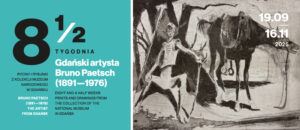
Recommended for you
The third exhibition in the вҖһEight and a Half WeeksвҖқ series is a close encounter with the work of Bruno Paetsch, a distinguished GdaЕ„sk artist who was forced to leave his hometown after World War II. He was inspired by literature and mythology, and was particularly fascinated by the figure of the misunderstood loner, individualist, and misfit. The exhibition, running from 19 September to 16 November at the Department of Historical Art, will feature a number of the artistвҖҷs works acquired in 2022, as well as works from the pre-World War II collection of the City Museum.
Bruno Paetsch (1891-1976) began his artistic education at the Kunstgewerbeschule in GdaЕ„sk and later continued it at the Kunstakademie in Berlin. BerlinвҖ“not only a relatively close academic centre, but also a metropolis where the most avant-garde trends in art intersectedвҖ“was, alongside KГ¶nigsberg, a natural destination for GdaЕ„sk artists. PaetschвҖҷs stay in this city resulted in his predilection for new trends in art and his departure from academicism.
In the 1930s, he received a scholarship that enabled him to travel to Rome for a year. When he returned, he lived and worked in GdaЕ„sk until the end of World War II, but after 1945, like many GdaЕ„sk inhabitants, he was forced to leave his hometown and settled in Hamburg, where he worked as an art teacher at a school in the Barmbek-Nord quarter.
Even though Paetsch was one of the most talented artists of the Free City of GdaЕ„sk, the only lasting trace of his creative presence in the city is the bas-relief titled вҖһMotherhoodвҖқ on the faГ§ade of the Pomeranian Medical Post-Secondary School in Hallera Street in GdaЕ„sk. By the end of World War II, many of his works had been destroyed, but several drawings survived in the GdaЕ„sk museum.
Paetsch mainly worked with oil paints, but he also created works in pastel, gouache, watercolour, and engravings. His prints referred to the world of literature and mythology, but also included cityscapes, still lifes, and landscapes marked by a characteristic melancholy. The artist drew on motifs from, among others, ShakespeareвҖҷs plays, Daniel DefoeвҖҷs вҖһRobinson CrusoeвҖқ, CervantesвҖҷ вҖһDon QuixoteвҖқ, and GoetheвҖҷs вҖһFaustвҖқ. He was fascinated by the ethos of the misunderstood loner, individualist, and misfit, a sentiment particularly strong in the later stage of his career, when, after fleeing his native GdaЕ„sk, he could to some extent identify with the characters he depicted in his works.
His illustrations are characterised by simplified contours, dynamic lines, strong contrasts between light and dark areas, disproportionate figures and distorted optics, breaking with the traditional understanding of perspective and the relationship of individual elements to space.
In 2022, the National Museum in GdaЕ„sk acquired 44 graphic works by the artist. They were purchased from Wolfgang Drost, the son of the last director of the pre-war City Museum in GdaЕ„sk. Drost, who shared PaetschвҖҷs fate and left GdaЕ„sk in 1945, maintained close contact with the artist until the end of his life and collected all of his known graphic works.
The exhibition presents some of the new acquisitions, and works from the pre-World War II collection of the City Museum. They predominantly display the aesthetics of German impressionism and expressionism, two movements that dominated illustration art in the first half of the 20th century.
Artists on show
Contact details


 ARTISTS
ARTISTS









